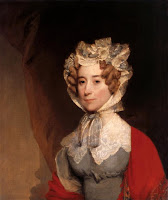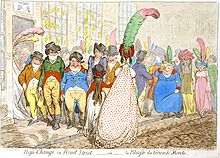JASNA AGM 2016
A Trip to JASNA AGM 2016 : Day 1
Friday Oct. 21 - Breakout Sessions
I didn't make it back to the hotel from the DAR in time for the opening or keynote speaker. I squeaked in just before the breakout sessions began.
Breakout Session A5: What Emma Knew: Modes of Education in Emma
Jessica Richard, Wake Forest University
This session will illuminate theories and models of women’s education in early 19th-century England and in Emma. In this context, rather than teaching her lessons, the novel vindicates Emma’s independent intuition and knowledge, aligning her—and Austen—with radical theorists of women’s education.
This one went over my head. The only thing I really remember is whether Jane Austen was making a statement on the belief that the dumber a woman is, the more a man will want her. (Citing Northanger Abbey's Catherine Morland and Emma's Harriet Smith).
Breakout Session B4: Dependence or Independence?
Sheryl Craig, University of Central Missouri
Emma contains 16 female characters who are gainfully employed and who have the ability to conduct business, to manage their own money, and to behave as rational creatures. Thus, in this novel Jane Austen is making the same argument Mary Wollstonecraft made in A Vindication of the Rights of Woman.
This talk was really interesting. How many working women are mentioned in Emma? Sheryl Craig counted at least 16- depending on how you count working women. Do you count Miss Weston/Mrs. Taylor? The book opens with her wedding, so probably not. Do you count Jane Fairfax who is not yet working? Maybe. There are women who are mentioned by name like Mrs. Goddard, and other working women who have no names like Emma's maid. I had forgotten about Emma's maid. A comprehensive list would include other forgotten characters like Miss Nash, head teacher at Mrs. Goddard's school; Mrs. Ford, shopkeeper; Mrs. Hodges, housekeeper at Donwell Abbey; Wright, housekeeper at the vicarage; Hannah, servant at Randall's; Patty, servant to the Bates women; Mrs. Stokes, owner of the Crown Inn at Highbury; other teachers, Miss Price and Miss Richardson; Serle, cook at Hartfield.
(list from Strange Blog)
How did these women get their jobs? Is their basis in historic facts for these occupations? Cooks, housekeepers and maids are common occupations for women, as was teaching; but what about innkeeper or shop owner? Dr. Sheryl Craig has researched the Hampshire Chronicle (Winchester, England) from the period 1815-1816 and come up with a list of help wanted ads by and for women. The advertisements ask for teachers/governess, nurse, upper servant, cook. The more unusual ads give credence to the unseen/forgotten working women in Emma.
ELIZABETH GLENCROSS... Linen-Draper, Hawker, &c.
Mrs. Hardwell, Watchmaker
TO MILERS, WANTED ... A sober, steady, MAN (does this imply women had applied for the position?)
Other fabulous ads include:
To be LEFT.... PUBLIC-HOUSE.... £200 to £300-Imediate posession given. (Perhaps this is how Mrs. Ford acquired her inn?)
DINAH POINTER, Widow of the late John Pointer, Maltster, of the Soke, Winchester, ..... [thanks her husband's friends] and begs leave to inform them the business will be carried on as usual, under the direction of his Executors, for the maintenance of herself and children...
Mrs. Bradfield, Plumber and Glazier
For many women in England (and anywhere else) at that time, working wasn't a choice, it was a necessity. What we can learn from these ads is that women could and did hold occupations in early 19th century England. Widowhood afforded women the money and freedom to pursue occupations outside of the home and domestic realm.



















































